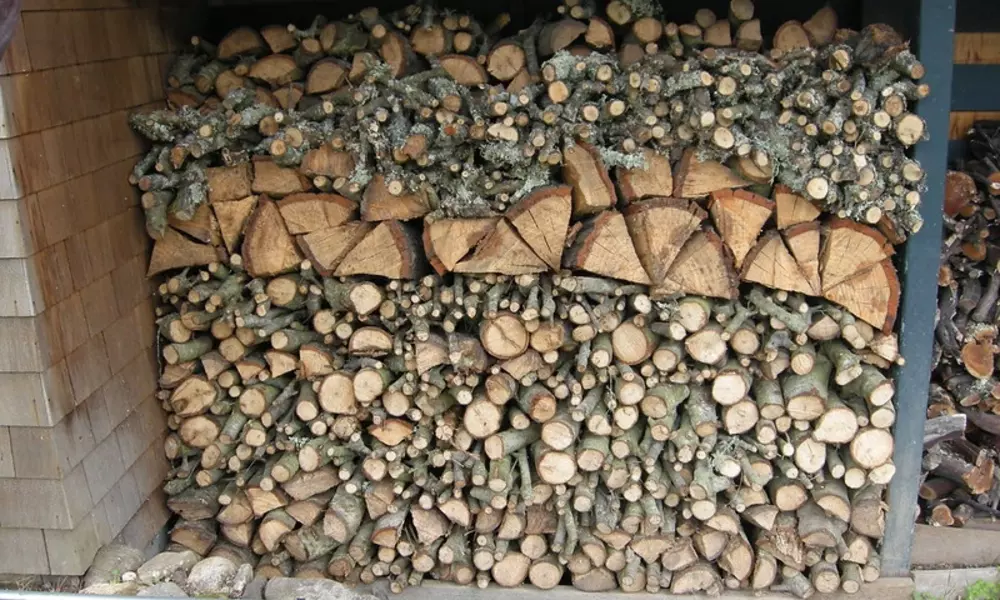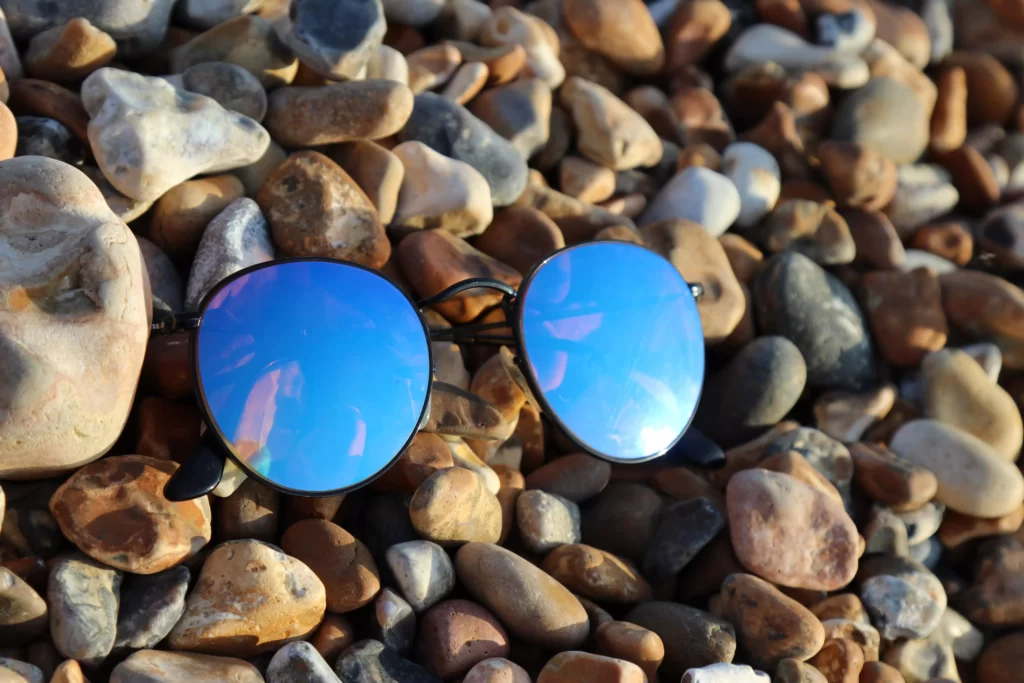The allure of red-leaved plants lies in their vibrant, eye-catching hues that bring a striking contrast to the green foliage in any garden or balcony. While the fiery reds and oranges of autumn are widely appreciated, numerous plants maintain their red foliage throughout the year.
These plants not only add aesthetic value but also offer unique benefits and considerations for gardeners. In this guide, we’ll explore a variety of red-leaved plants, their care requirements, and tips for incorporating them into your outdoor and indoor spaces.
The Science Behind Red Leaves
Did you know that the red colouration in leaves is due to anthocyanins? This red pigment protects chlorophyll from harmful radiation but also reduces the plant’s ability to photosynthesize in low light.
Consequently, placing red-leaved plants in partial shade is often the best practice to prevent cell damage from intense sunlight.
Japanese Maple Varieties
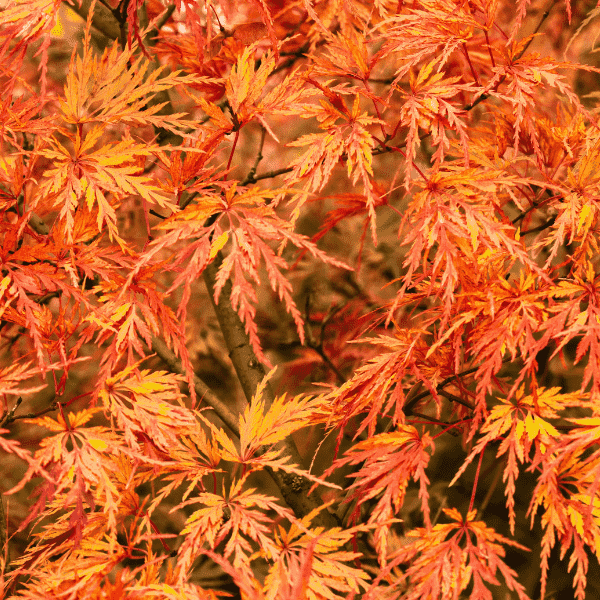
Acer palmatum
One of the most popular trees with red leaves is the Japanese maple (Acer palmatum). Known for its delicate, lacy foliage and stunning autumn colours, several cultivars feature red leaves throughout the growing season.
Acer palmatum Emperor One
This cultivar displays brilliant red leaves from bud break and retains its colour through the growing season. It has an elegant, upright growth habit, making it suitable for gardens, pots, balconies, or patios.
Acer palmatum Bloodgood
Another favourite, ‘Bloodgood’ is prized for its deep red foliage and robust nature. It is winter hardy and can be planted in various settings, from garden beds to container gardens.
Chinese Fringe Flower’s Black Pearl
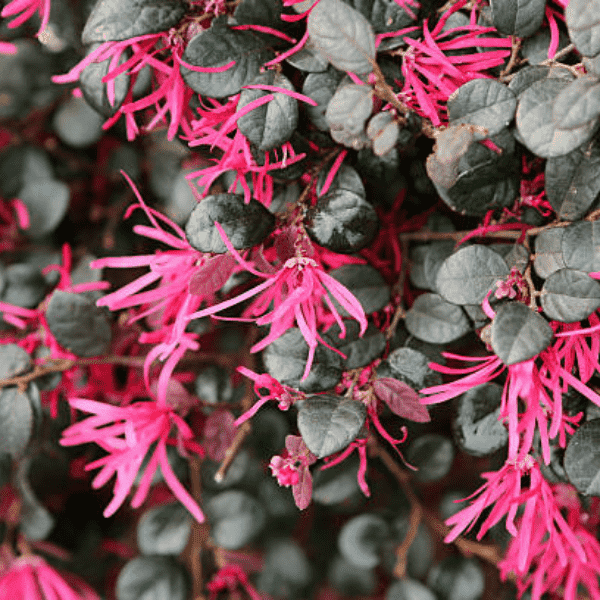
Loropetalum chinense Black Pearl
The ‘Black Pearl’ variety of the Chinese fringe flower boasts red leaves and vibrant pink flowers that bloom from March to April. These strap-like flowers create a stunning contrast with the dark red foliage.
Growing Tips
These plants prefer a sheltered, sunny, or partially shady spot. They thrive in well-drained soil and can be grown as standalone shrubs or as part of a mixed border.
Coral Bells Varieties
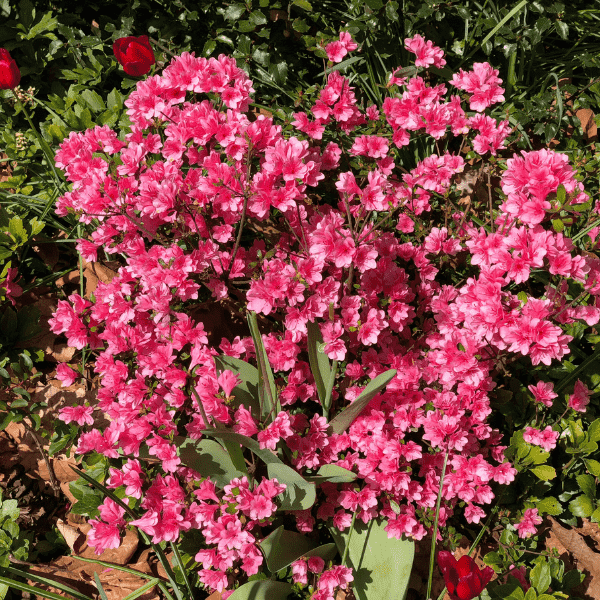
Heuchera
Coral bells (Heuchera) are evergreen perennials known for their ornamental foliage. The leaves of Heuchera can range from light green to dark purple, with many stunning red varieties.
Heuchera Villosa Berry Smoothie Features striking pink to bright red foliage.
Heuchera micrantha Molly Bush Dark red to purple leaves.
Growing Conditions
Coral bells tolerate frost and prefer sunny to semi-shaded locations with well-drained, nutrient-rich soil.
Red Barberry Species and Varieties
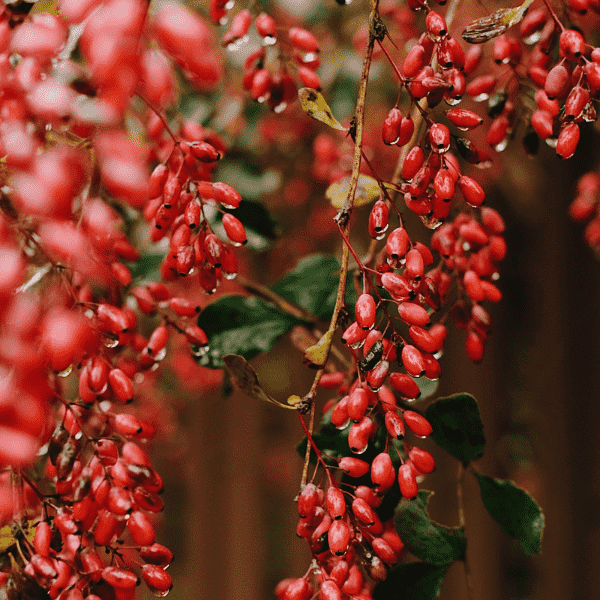
Berberis
Barberry plants are known for their hardy nature and year-round red foliage. They are excellent choices for low-maintenance gardens.
Berberis thunbergii var. atropurpurea Purple-red leaves
Berberis thunbergii Bagatelle Red-brown foliage.
Gagnepain’s barberry is a mixture of green and red leaves.
Planting Tips
Barberries thrive in somewhat dry locations and can be planted as hedges or standalone shrubs.
Forest Pansy Redbud
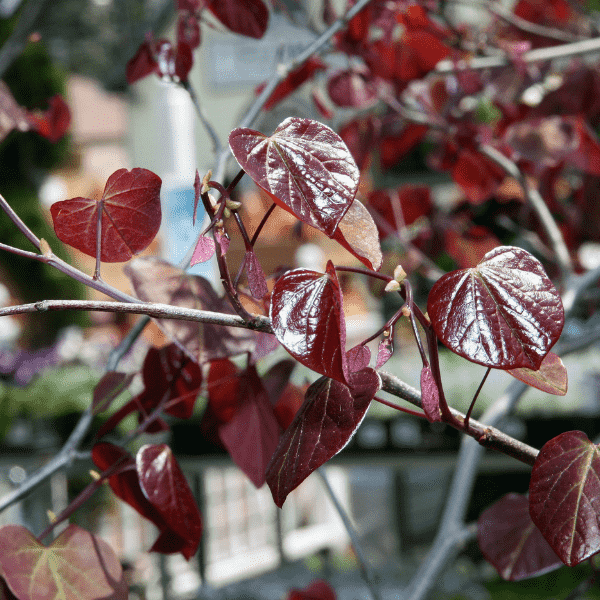
Cercis canadensis ‘Forest Pansy’
The forest pansy redbud is a deciduous tree with heart-shaped leaves that start bright red and turn dark purple, maintaining their color in autumn.
Growing Tips These trees prefer nutrient-rich soil with plenty of lime and a sunny location. They can grow up to 8 meters tall and produce purple and pink flowers from April to May.
Japanese Cherry Royal Burgundy
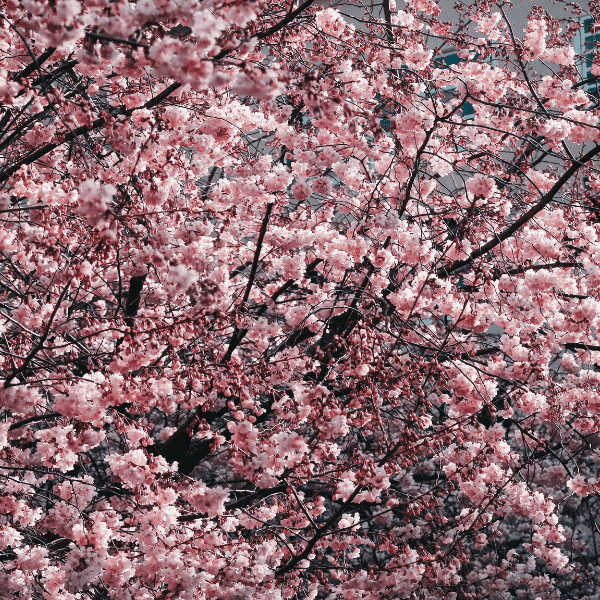
Prunus serrulata Royal Burgundy
The ‘Royal Burgundy’ cultivar of the Japanese cherry is a large shrub with pointed, elliptical dark purple leaves that turn red to bronze in autumn.
Ornamental Value
This tree blooms with pink double-petaled flowers from late April to early May.
Planting Tips
Japanese cherry trees thrive in full sun and are suitable for gardens or large containers.
Photinia Red Robin
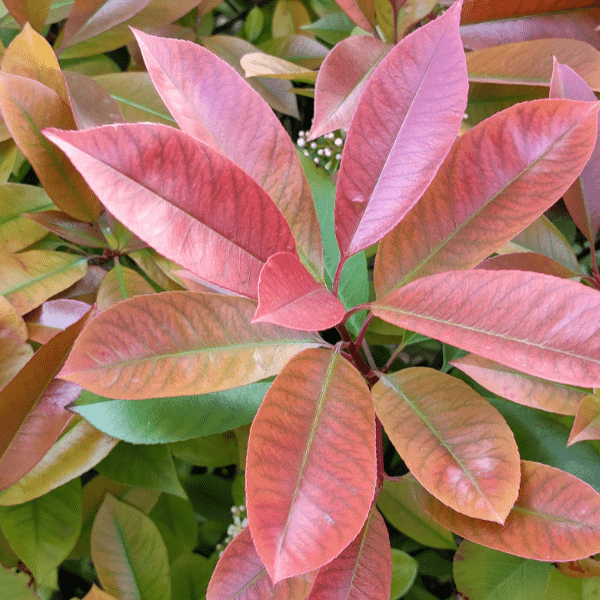
Photinia fraseri Red Robin
The red-tip photinia is an evergreen shrub that starts with red leaves which gradually turn green.
- Size These shrubs grow 2 to 3 meters tall, making them ideal for hedges.
Growing Tips ‘Red Robin’ is hardy in mild winters and prefers a sunny to semi-shaded location with well-drained soil.
Black Cherry Plum
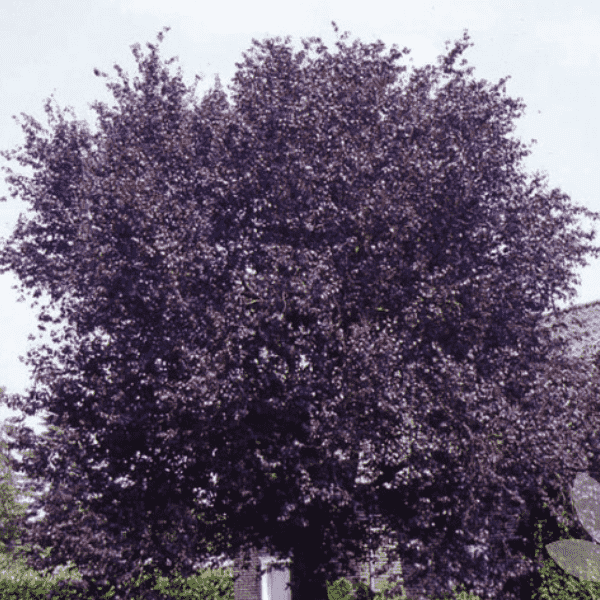
Prunus cerasifera ‘Nigra’
The black cherry plum is notable for its dark red leaves, pink flowers, and edible fruits.
- Size This large shrub can grow up to 4 meters high.
- Fruit After flowering in March and April, it produces sweet, juicy cherry plums that can be harvested in July.
- Growing Tips It is undemanding and hardy, thriving in various soil types.
Purple Basil
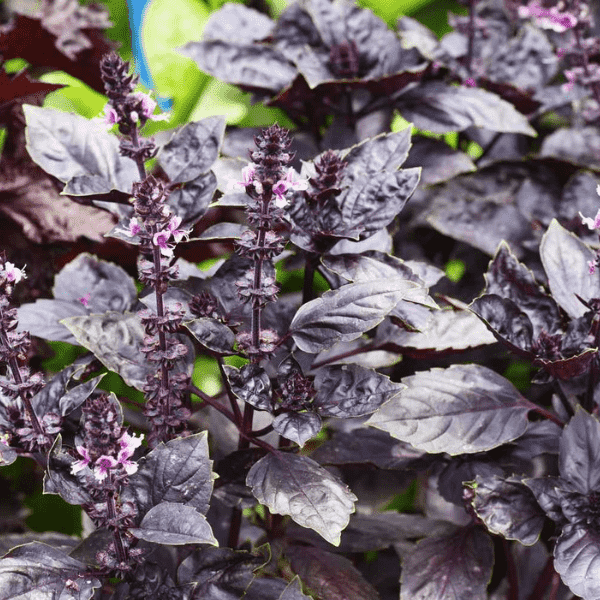
Ocimum basilicum
Purple basil is a red-leaved plant that is both ornamental and edible.
- Varieties Several perennial varieties grow large, adding vibrant red hues to your garden bed or balcony.
- Growing Tips Use nutrient-rich, structurally stable substrates like Plantura Organic Tomato & Vegetable Compost. This compost retains moisture well, reducing the need for frequent soil renewal.
Indoor Red-Leaved Plants
Red-leaved plants aren’t limited to outdoor gardens. Many varieties can be grown indoors, bringing pops of natural color to your home. Consider plants like:
- Calathea Dottie is Known for its deep red and purple foliage.
- Coleus is Available in various red and maroon varieties.
- Begonia rex Red Kiss Features striking red leaves with dark edges.
Conclusion
Red-leaved plants offer a stunning way to add color and interest to any garden or balcony. From the delicate foliage of Japanese maples to the robust, hardy nature of barberries, there’s a red-leaved plant for every gardening need.
Whether you’re looking to create a vibrant outdoor space or add a splash of color to your indoor plant collection, these plants are sure to impress with their beauty and unique characteristics. Remember to consider their specific light and soil requirements to ensure they thrive and continue to add their fiery hues to your garden throughout the year.


